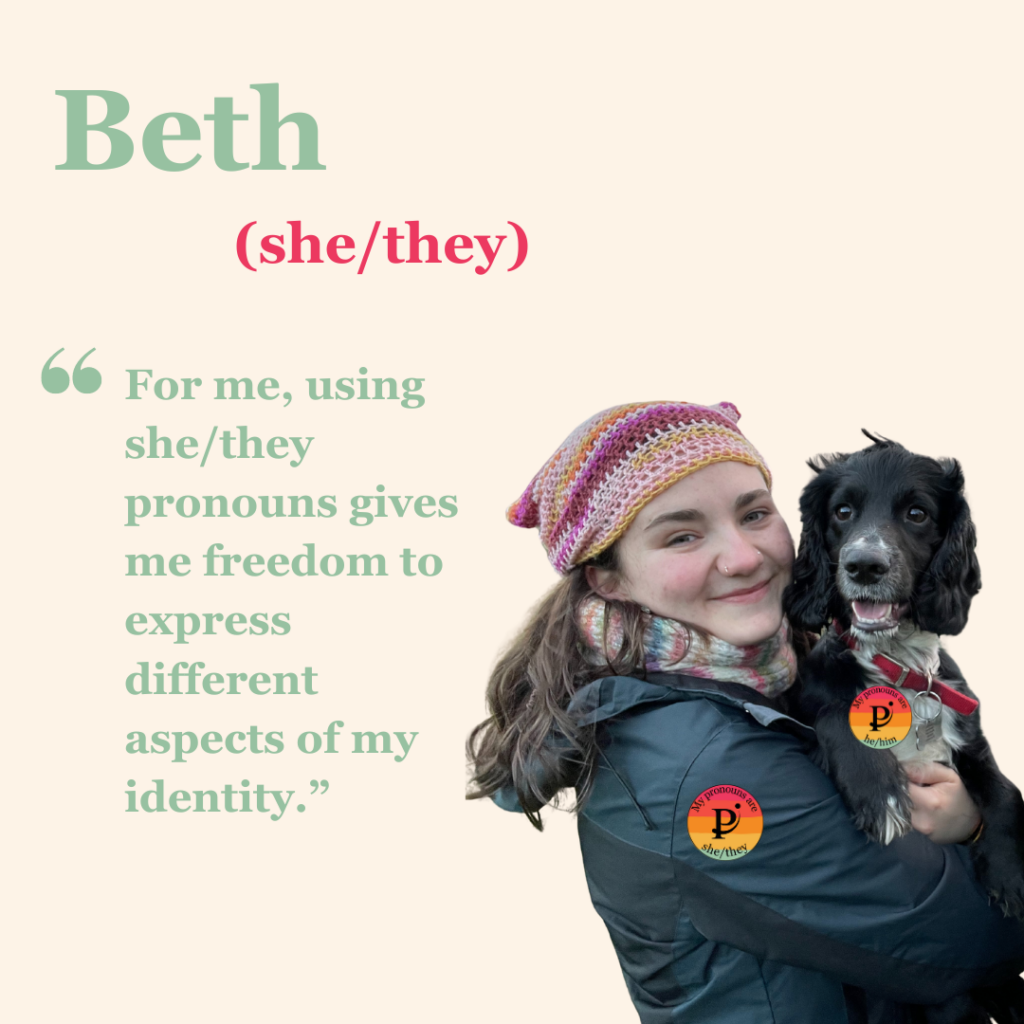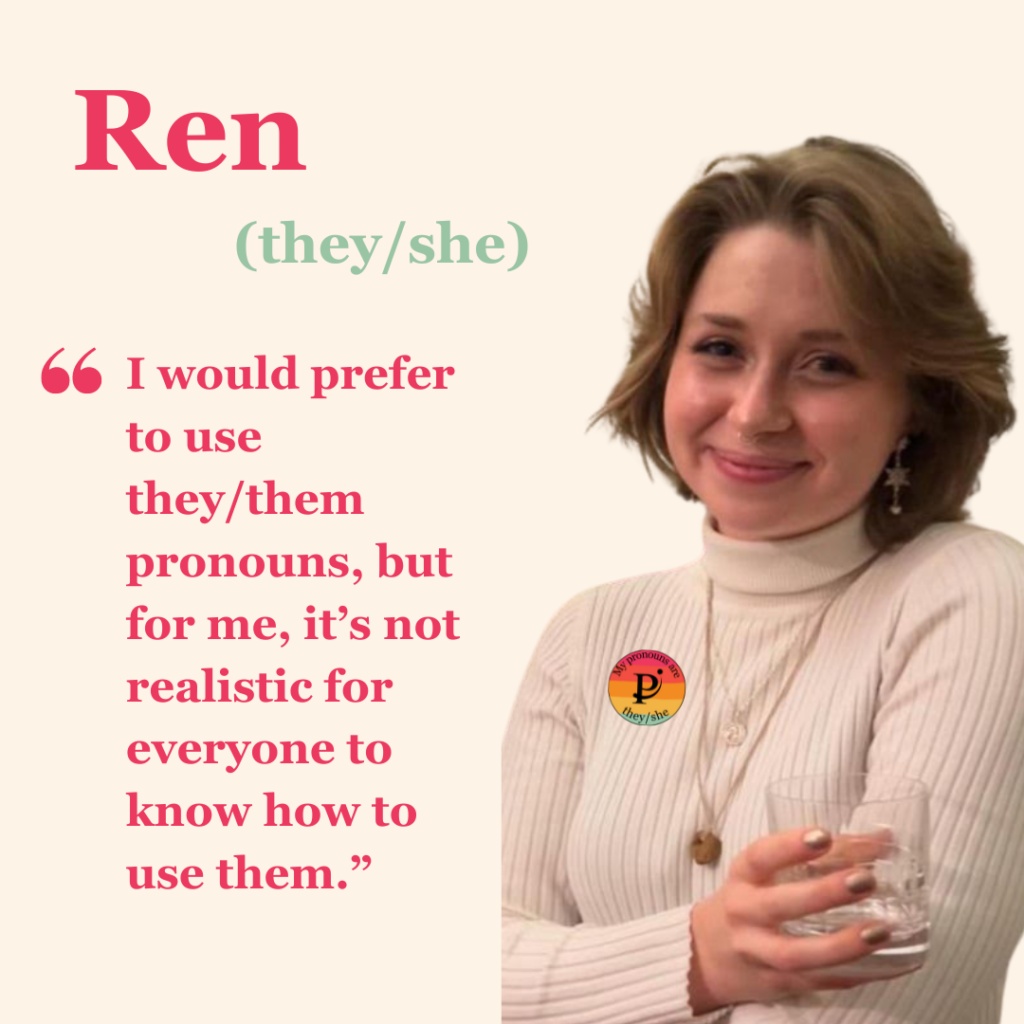People can use these pronouns in very different ways, but all forms of gender expression are valid. Some use them to explore the fluidity in gender- it is a social construct which can be expressed in a multitude of ways- and some use them on the journey to accepting their true identity.
Sometimes, these types of pronouns are called ‘rolling pronouns’, as they give the user the ability to shift and change them over time. For example, Jonathan Van Ness, from the Netflix show Queer Eye, uses the pronouns she/he/they. It depends, for them, on how they are feeling every day- whether they are feeling more feminine, masculine, or non-binary.
For me, using she/they pronouns gives me freedom to express different aspects of my identity. The ‘she’ side represents my lesbian identity, as a WLW (woman loving woman). I love the femininity that comes with this, while the ‘they’ side gives me the opportunity to be more ‘gender anonymous’ if I wish.

I say to everyone that they can use either, I just love to give people the option. Some days, however, I may ask my partner or close friends to refer to me with ‘they’. This is when I feel that I don’t want to be perceived as a woman, but most of the time people choose ‘she’.
Adding ‘they’ to my pronouns also allows me to show solidarity with my transgender peers, especially in an age where transphobia is rife. It slaps people in the face who say ‘they’ cannot be used as a singular pronoun (it certainly can).
Pride & Joy also spoke to Ren (they/she), a 19-year-old non-binary sixth form student, on why they choose to use their pronouns.
Arabella. My ‘dead name’. Every time I heard this name, it hit me like a ton of bricks. I knew this was no longer my name…But what did this mean for gender identity?
I was living in Taiwan at the time, and was convinced I was a boy. But after using he/him pronouns for a while, I knew this wasn’t me. I just wanted to be disassociated from my ‘dead name’ which felt so foreign to me.
After watching trans and non-binary content on TikTok, I learned about the identity ‘non-binary’. This means you don’t identify as either male or female, instead preferring a gender fluid option.
I started the journey to get hormone replacement therapy, thinking about saving up for things like top surgery. It was a really insightful thing for me to go through because even though I don’t identify as being trans now, I can relate to the experience completely.

After changing my name to Ren, a more androgynous and gender-neutral option, I told everyone close to me not to call me Arabella anymore. It was a short conversation with my parents and they struggled with pronouns for a long time. But they are respectful and supportive.
Now, I would prefer to use they/them pronouns, but for me, it’s not realistic for everyone to know how to use them. I’ll explain as best as I can, but I work in a café. I dress feminine and labelled a ‘waitress’, so I use they/she simply because it’s easier.
Family members, friends, and colleagues don’t know about my gender identity. While I’m happy to discuss it with them, I’m not willing to start a fight with everyone who refers to me like I’m a girl.
I have they/she on my social media pages. People who don’t know me tend to use she/her, but my close friends use they/them because they know it’s what I prefer.
The main way to ensure you are using he/they or she/they correctly is simply to ask people. The whole point of ‘rolling pronouns’ is that there’s that element of choice. Everyone has the freedom to use them differently.

